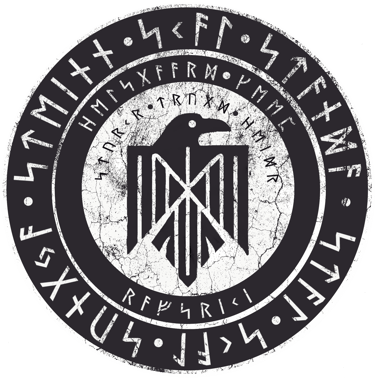
Fyrnrót (fyrnroot) is a mystical herb native to the cold, untamed regions of Norðrlönd. It is a dark, woody root with crimson veins running through its surface, giving it an eerie, almost glowing appearance when steeped in hot water. The name comes from the Old Norse word "fyrn" (meaning ancient or old), as it is believed to be a plant of great age and power, and "rót" is the word for root.
Properties & Uses:
When brewed into a tea, fyrnrót has a strong, earthy taste with a hint of bitterness. It is said to heighten awareness, sharpen the mind, and enhance prophetic visions.
In larger doses, fyrnrót can induce vivid dreams, sometimes leading to what the Seiðr calls the Sight—a state of deep meditation where the consumer can glimpse possible futures.
Fyrnrót is resilient, growing in rocky, frostbitten soil where most plants fail. It is often found in shadowed groves, along the banks of icy streams, or nestled in the roots of ancient trees.
Healers use it to clear the mind, boost stamina, and ward off fatigue, but excessive use can cause restlessness and sleeplessness.
Cultural Significance:
The Seiðr reveres fyrnrót as a sacred plant, using it in ceremonies and rites of passage.
Warriors sometimes chew small pieces of dried fyrnrót before battle, believing it grants clarity and focus in combat.
Some old legends warn that too much fyrnrót can tether a soul between worlds, leaving the user in a half-waking state where spirits may whisper in their ears.
Fyrnrót – A Plant of the Dead
Fyrnrót is a rare and mystical herb found only in the coldest, most desolate regions of Norðrlönd. Its appearance is as eerie as its reputation, and those who seek it must tread carefully—for the plant is said to grow only where the dead have whispered.
🌿 Origin: The Blood of a Cursed Seer
Legends say Fyrnrót first grew from the spilled blood of a forgotten Seiðr, a woman who saw too much—truths the gods had not meant for mortals to know. She tried to speak of what she had seen, to warn of a fate yet unwritten, but the Allfather struck her down, and where her body fell, Fyrnrót took root.
The plant became a bridge between worlds—a link to the spirits of the fallen. It is said that those who chew its leaves or drink its tea do not see the future alone—they hear the whispers of the dead.
🌿 Appearance
Root: The root is dark and gnarled, resembling twisted blackened wood, but laced with glowing crimson veins that pulse faintly in the dark. When cut, the inside has a deep red core, almost as if it still holds the warmth of something once living.
Leaves: The leaves are a deep, dusky green, their surfaces traced with silver patterns that seem to shift under the moonlight. Some claim these patterns resemble runes or ancient script, though no two leaves bear the same design.
Flowers (Rare): On the coldest nights of the year, some Fyrnroot plants bloom with ghostly white flowers that shimmer like frost. The Seiðr believe these flowers mark places where the veil between life and death is weakest.
🌙 Growth & Habitat
Fyrnrót thrives in rocky, frostbitten soil, particularly near ancient trees, forgotten graves, or sites of old battles.
It is almost impossible to cultivate—it chooses where to grow, often appearing overnight in places where someone has died violently or left the world with unfinished business.
Some claim it only grows where lightning has struck, as if the earth itself must be awakened for it to take root.
🔥 Mystical Properties
When steeped into a tea, the water turns an inky black with a faint crimson glow. The taste is earthy, bitter, and metallic—almost like blood.
Chewing the raw leaves sharpens the mind, bringing clarity, heightened senses, and vivid dreams—but in higher doses, it thins the veil between worlds, allowing glimpses of spirits, echoes of the past, or even whispers from the dead.
Some say Fyrnrót does not merely show the future—it shows possibilities. Paths not yet walked, choices yet to be made. But those untrained in its use may find themselves trapped in visions that feel too real.
🩸 Legends & Dangers
Some believe Fyrnrót is a gift from the gods, a way to see beyond mortal understanding. Others call it a cursed plant, meant to tempt the foolish into madness.
Overuse of Fyrnrót is dangerous—too many leaves at once, and the user may find themselves unable to tell the difference between the living and the dead.
There are stories of warriors who chewed too much before battle and began fighting alongside the spirits of the fallen—only to realize, too late, that they had been striking at their own allies.
It is whispered that those who die with Fyrnrót in their system do not pass on easily—their souls linger, caught in a half-state between worlds.
☠️ The Risks: Not All Voices Are Friendly
The Seiðr use Fyrnrót to commune with spirits, calling upon the wisdom of those who have walked before them. But not every soul rests in peace. Some whispers come with malice, and those unprepared may find themselves haunted by voices that do not fade.
Too much Fyrnrót and the barrier between life and death thins—the user may hear names they do not know, glimpse faces long turned to dust, or feel hands brushing against them when no one is there.
There are stories of warriors who chewed too much Fyrnrót before battle and found themselves fighting alongside ghosts, unable to tell who was truly among the living.
🌙 Forbidden in Some Clans
Some Ravnsríki clans forbid the use of Fyrnrót, believing it invites lost souls to cling to the living. They claim that the most desperate spirits, those denied entry to the halls of their ancestors, lurk in the root, waiting for a way back.
The Seiðr dismiss this as fear-driven superstition, but even they warn that one should never consume Fyrnrót carelessly.
Neither the Dwarfs nor the Aelfs have such prohibition.
Never heard of Fyrnrót? If my search engine manipulation works, this is the only page on the Internet that discusses it because I made up the whole damn thing. Happy April 1, 2025.

Journey
Explore the tales of life in Helsgaard Keep.
Keep in Touch!!!
Copyright ©2024-2025 Digital Grid, LLC. All rights reserved.




